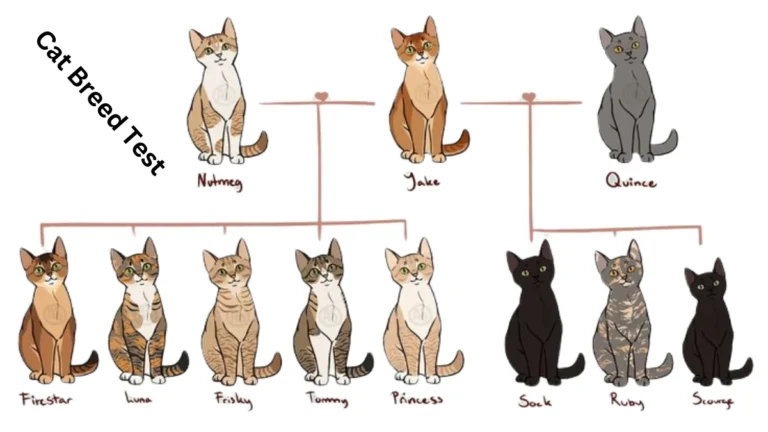Introduction to the Vampire Cat Breed
The world of feline enthusiasts has been abuzz with talk about the “Vampire Cat Breed.” Known for its distinct, fang-like teeth and mysterious aura, this breed captivates cat lovers worldwide. But what exactly is a vampire cat? Where do they come from? In this article, we’ll explore the unique characteristics, history, and care needs of these fascinating felines.
What is a Vampire Cat Breed?
The term “Vampire Cat” doesn’t refer to an official breed recognized by major cat associations. Instead, it describes a subset of cats—often Sphynx, Devon Rex, or Oriental Shorthair breeds—with pronounced canine teeth resembling vampire fangs. These unique features are the result of genetics, dental structures, and sometimes even minor dental misalignments.
Vampire cats are not dangerous or supernatural, despite their eerie resemblance to fictional vampires. Instead, they are playful, loving, and social creatures with intriguing appearances.
Origins of Vampire Cats
While the vampire cat phenomenon has gained traction recently, cats with fang-like teeth have existed for centuries. Many believe the term gained popularity thanks to internet memes and viral posts featuring cats with pronounced fangs. The connection to vampire folklore adds an air of mystery and charm.
Interestingly, breeds like the Sphynx often come up in vampire cat discussions because of their sleek, bat-like appearance and hairless bodies.
For a deeper dive into cat breeds with unique characteristics, explore the Cat Breeds section on Pet Haven Guide.
Physical Traits of Vampire Cats
What makes a vampire cat stand out? These felines often have:
- Elongated Canines: Their upper canine teeth protrude slightly, creating the “fang” effect.
- Slim Bodies: Many vampire cats belong to sleek, lithe breeds like the Oriental Shorthair.
- Eerie Eyes: Some breeds have striking almond-shaped eyes, enhancing their gothic appeal.
- Unique Coat Colors: Vampire cats often have dark or unusual coat patterns, although they can be any color.
Popular Vampire Cat Breeds
Certain breeds are more likely to exhibit the fang-like traits that define vampire cats. These include:
- Sphynx: Hairless and bat-like, the Sphynx is often associated with vampire cats.
- Oriental Shorthair: Known for their angular features and slim builds, they frequently have pronounced fangs.
- Devon Rex and Cornish Rex: Both breeds are known for their unique appearance and mischievous demeanor.
Caring for Vampire Cats
Owning a vampire cat requires understanding its specific care needs. These unique cats may not need extra care for their fangs, but their associated breeds have distinct requirements.
- Dental Care: Regular dental checkups ensure that elongated canines don’t lead to gum or tooth issues.
- Diet: Feeding your feline a proper diet is critical. Learn more about healthy cat foods on Cats Foods.
- Grooming: Depending on the breed, grooming needs vary. For example, Sphynx cats need regular baths to manage oily skin.
- Exercise and Enrichment: Vampire cats are often active and curious, requiring stimulating toys and interactive playtime.
Personality Traits
Despite their spooky looks, vampire cats are anything but scary. These felines are often affectionate, intelligent, and playful. Many breeds linked to vampire cats, such as the Sphynx, are highly social and thrive on human interaction.
If you’re considering adopting one of these unique cats, be prepared for a loyal companion with a flair for the dramatic! Learn more about pet insurance options for exotic breeds like vampire cats on Pet Insurance.
Training Vampire Cats
Training a vampire cat isn’t different from training any other breed, but these cats often respond well to positive reinforcement. For tips and techniques, visit the Cat Training section on Pet Haven Guide.
Health Concerns
While their fangs are harmless, certain breeds associated with vampire cats can face specific health issues. For example:
- Dental Problems: Overgrown or misaligned fangs may lead to complications.
- Skin Sensitivities: Breeds like the Sphynx are prone to skin conditions.
- Respiratory Issues: Narrow nasal passages in certain breeds can lead to breathing difficulties.
For guidance on maintaining your cat’s health, check out the Health Care section.
Adopting a Vampire Cat
If you’re enchanted by the vampire cat breed, adoption is a fantastic option. Shelters and rescue groups often have cats with unique features waiting for loving homes. Before adopting, research the specific needs of the breed you’re interested in.
For more resources and to connect with experts, visit the About Us and Contact pages at Pet Haven Guide.
FAQ:About Vampire Cat Breed
Are vampire cats a real breed?
No, vampire cats are not an officially recognized breed. The term refers to cats with prominent fang-like canine teeth, giving them a “vampire-like” appearance. These traits are common in certain breeds like Sphynx, Oriental Shorthair, or Devon Rex.
Do vampire cats require special care for their fangs?
Not usually. While their fangs are a natural trait, regular dental checkups are essential to prevent potential issues like overgrowth or gum problems. Keeping up with general cat dental hygiene is key.
Where can I adopt or buy a vampire cat?
You can find vampire-like cats in shelters, rescue centers, or breeders specializing in breeds like Sphynx or Oriental Shorthair. Before adopting or buying, ensure you understand the specific care requirements of the breed. For more guidance, explore the Cat Breeds section.
Conclusion:
Vampire cats are a captivating combination of mystery and charm. From their fang-like teeth to their affectionate personalities, these unique felines offer an unforgettable pet experience. Whether you’re drawn to their gothic looks or their lively nature, vampire cats make fantastic companions for the right owner.
To explore more about feline care and breeds, browse Cats at Pet Haven Guide. Embrace the allure of these mesmerizing cats and discover a new world of feline fascination.




